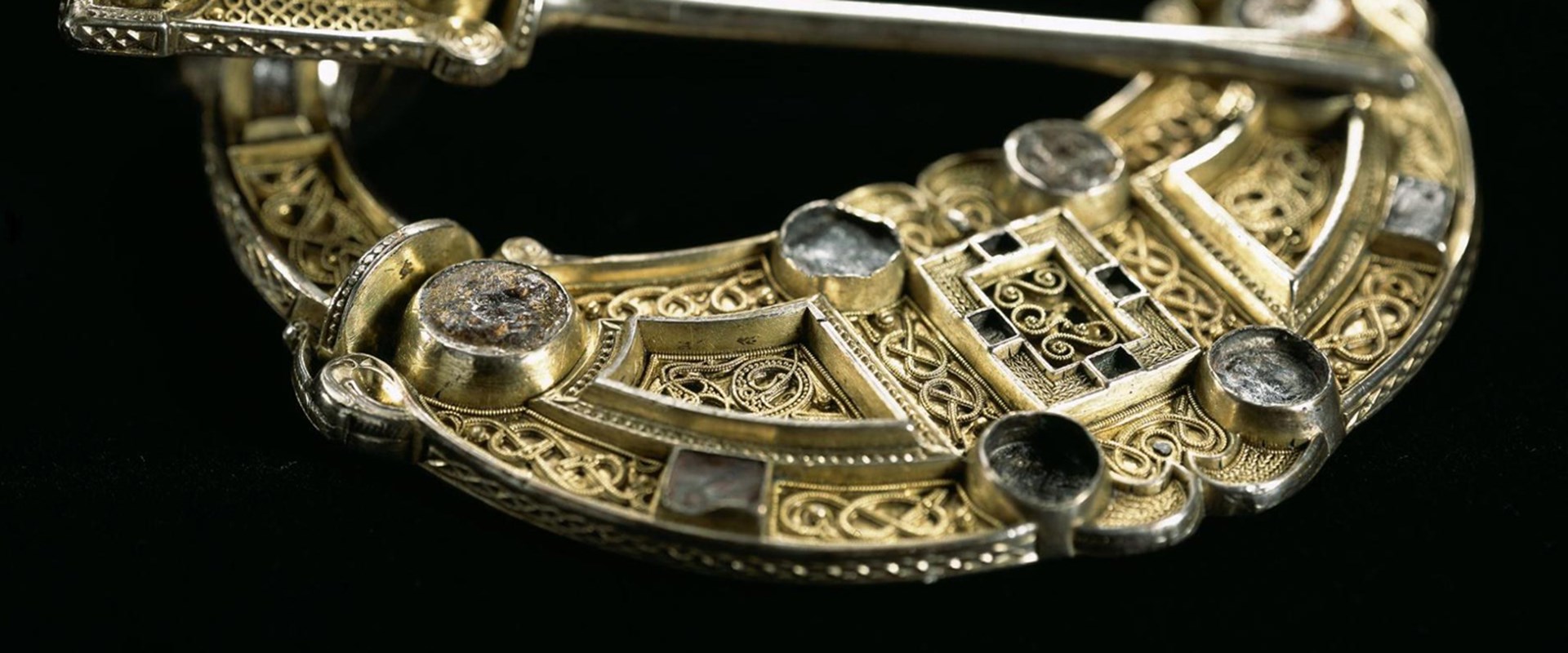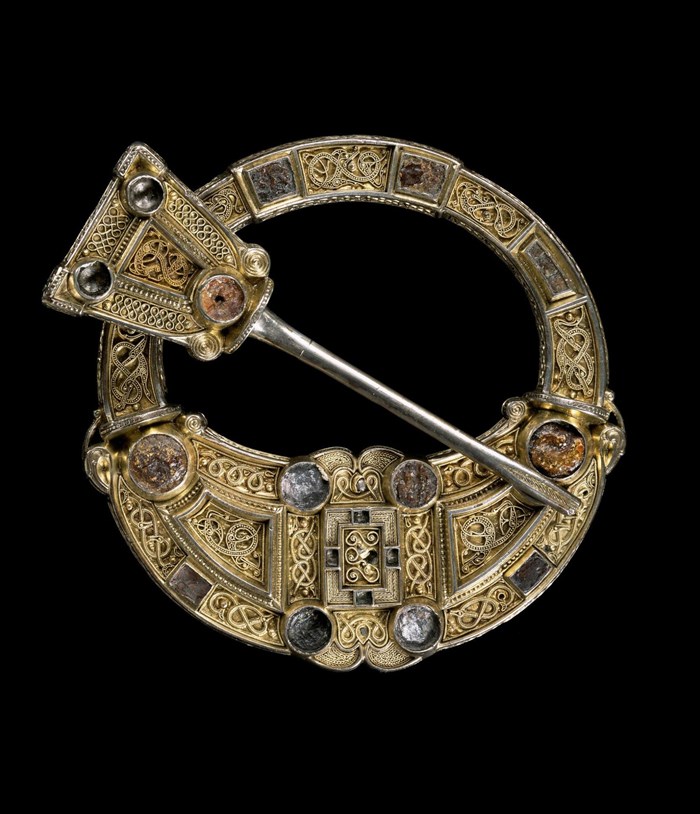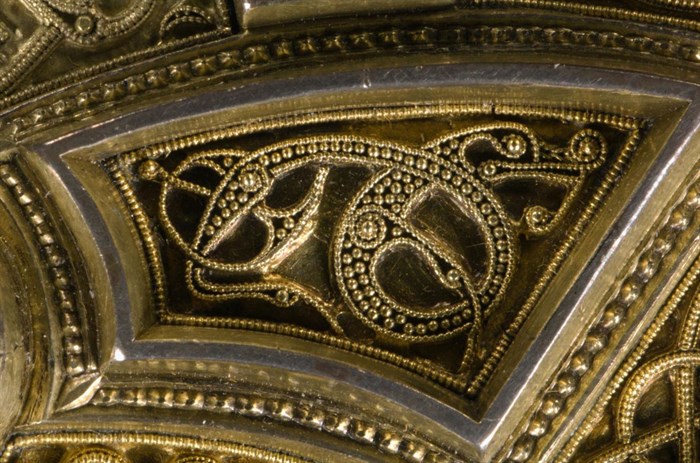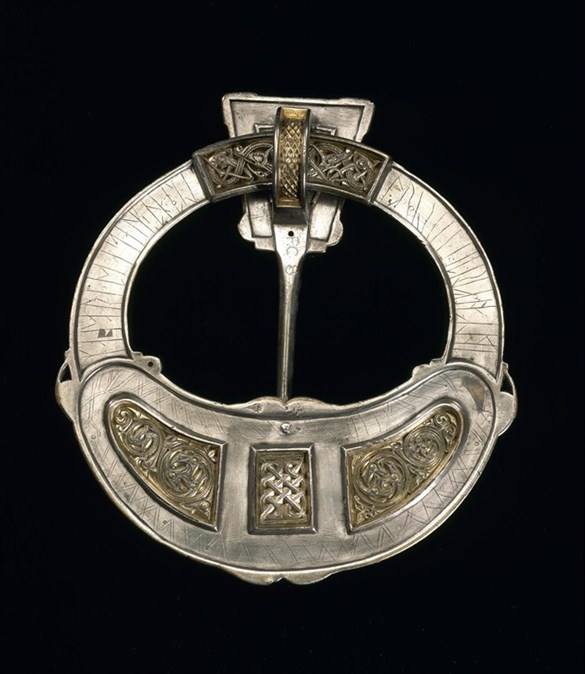Key in a search term below to search our website.
Key in a search term below to search our website.

This stunning brooch was found at Hunterston, Ayrshire during the 1830s. Made about AD700, it is a highly accomplished casting of silver, richly mounted with gold, silver and amber decoration.
Date
Produced c.700 AD
Found
Hunterston, Ayrshire, Scotland in the 1830s
Made in
Ireland or Western Scotland
Made from
Gold, silver and amber
Dimensions
Diameter 122mm, height 36mm
Museum reference
On display
Early People, Level -1, National Museum of Scotland
Did you know?
The inscription carved in Scandinavian runes translates as 'Melbrigda owns this brooch'.

The brooch is a truly special object, sumptuously decorated with animals executed in gold wire and granules, called filigree. In the centre of the brooch is a cross flanking a golden ‘Glory’ representing the risen Christ.
This close-up of the brooch shows the detailed filigree, the work of a highly accomplished craftsman.

The brooch was probably made at a royal site such as Dunadd, Argyll. It was the creation of an extremely skilled jeweller, someone familiar with Anglo-Saxon, Irish and Irish-Scottish techniques of decorative metalwork.
It is bigger and better than any other contemporary brooch and long remained an object of desire. It is one of the iconic objects of the Early Historic and Viking periods.
We have no way of knowing who owned the brooch, but it has clearly been treasured for centuries. Some 200 years after it was made, its then owner added an inscription in Viking Runes, which can be seen on the reverse of the brooch.

It could have been a gift given by a ruler to someone of great importance, perhaps another ruler, to mark a special occasion. Like us now, anyone who saw the brooch could not have failed to understand that the wearer was a powerful and important person indeed.